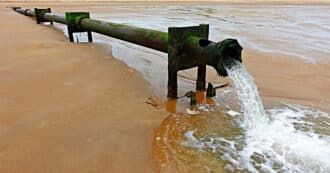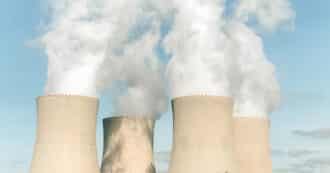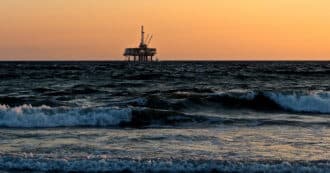By Sydney Cohen – The pollution of rivers is a big problem in many countries. It can cause people to get sick, and it also contributes to the extinction of fish species. The most common type of river pollution is caused by sewage or industrial waste that has been dumped into the water.
Pollution in Rivers and Streams
Many parts of the world have no laws or regulations regarding river safety and the quality of streams. Numerous rivers have suffered acutely from a range of pollutants that pose hazards to plant and animal life and the environment. There are also cases where people have fallen into polluted rivers and died as a result of pollution poisoning.
The Causes of River Pollution
Many of the world’s major cities have been built close to rivers and lakes. The water collected at these sources is vital in providing water to the nearby population. It will also water their crops, provide water for washing clothes and dishes as well as drinking water for the population.
However, the flip side of this configuration is that although rivers are great for humans, humans aren’t always great for rivers. Many of the areas close to urban epicenters result in anthropogenic pollution of the waterways in question, compromising the quality of the water and potentially endangering the life of aquatic organisms therein.
Sources of river pollution include runoff from mismanaged wastewater treatment plants, sewage, industrial runoff, as well as storm runoff which delivers high concentrations of contaminants such as oil and sediment from roads.
Agricultural Runoff Into Rivers
Sources of nutrient pollution are surface runoff from farming fields and pastures, septic systems, and pastures. Fish production on fish farms is also a source of pollution.
Agricultural fields have traditionally contained many toxic chemical compounds that include pesticide and organic compounds. In most cases, fertilizer causes overuse or excessive nutrient pollution – often resulting from nitrogen and/or phosphor-containing compounds. The presence of phosphorus and nitrogen in water causes water pollution and the contamination of ecosystems for its occupants.
River Pollution Creates Algal Blooms
Nutrient pollution, particularly from excess phosphorus in the water, creates algal blooms, which heavily affect environmental health. Often the algae suffocate the plant and aquatic life in the water below as they prevent access to oxygen. A great example of algal blooms resulting from excess nutrients in a body of water is on Lake Michigan.
Agricultural pollution of rivers also affects drinking water, as the filtration processes that create clean water from streams, rivers, and lakes are much more difficult when there are high levels of substances in the water.
Littering Is a Source of River Pollution
Sometimes people are careless or just reckless, dumping their waste next to, or even into, a river. A polluted river eventually flows into the oceans, with trillions of floating fragments, affecting the health of both the river and ocean ecosystems.
The waste can entangle the fauna and flora, and aquatic life can even ingest larger parts of the waste which can damage internal organs. Much of the plastic pollution that litters our world eventually makes its way into our oceans via natural groundwater flows.
The Effects of River Pollution
Pollution of waterways can cause damage to plants, animals, and humans. The river ecosystem both collects and transports pollutants, concentrating organic and inorganic pollutants in ways that negatively affect flora and fauna. Excess oil, heavy metals, pathogens, lead, sediment, and other materials in rivers eventually make their way to the ocean, where even more damage occurs since oceans contain even larger ecosystems. Not only is there potential for more damage, but pollution management and control becomes even more difficult once contaminants enter our oceans.
Rivers are a way of life for massive numbers of people providing their income through fishing and aquaculture. A polluted river could also negatively affect the food supply in many countries. Rivers are an integral part of the human ecosystem and the wider environment.
The Benefits of Green Infrastructure in Preventing Pollution
Green infrastructure practices make buildings in cities more environmentally friendly. For example, filtering rainwater collects rainwater where it has fallen so that there is an opportunity to use the water instead of allowing it to runoff into the sewage system.
These practices filter pollutants and save water and are therefore a more sustainable way of obtaining clean drinking water.
Green Urban Planning
A green urban approach to water management reduces pollutant presence in rivers, that reduces diseases in rivers and in other water supplies.
Green infrastructure solutions are cost-effective and can mitigate localized flooding from storm-water, which can lead to more oil and sediment in our rivers.
The Importance of Water Quality
The water quality of a river is important for many reasons, but the most obvious one is that water sustains all life.
A polluted water supply can lead to serious health problems and even to death.
River Pollution Tragedy Leads to River Restoration
At the 1997 Maccabiah games in Israel, a bridge crossing over the Yarkon River collapsed and tragically led to the deaths of four athletes that fell into the very polluted river. This shock brought about the process of completely rehabilitating and cleaning the Yarkon river.
Methods used included law enforcement, education and raising awareness. The river was also dredged to return the river to its natural depth and flow. Wastewater plants were set up to treat water entering the river and natural ecological parks were created at the source of the river to ensure all water that enters the river is clean.
The transformation of the water quality has been chosen as an example of a model for a countrywide educational programme on river restoration
Preventing River Pollution
Combined sewer overflow treatment and storm-water treatment systems enable the capture and storage of solids, oils, and hydrocarbons, metals, chemicals, and nutrients from sewage and storm-water plants.
Law Enforcement to Prevent River Pollution
The best way for reducing pollution in river waters is to capture pollutants before they can reach waterways, then remove them or clean them. Of course, law enforcement and legal action against polluters will reduce the amount of pollutants that need to be stopped from going into the rivers.
* Featured image source








